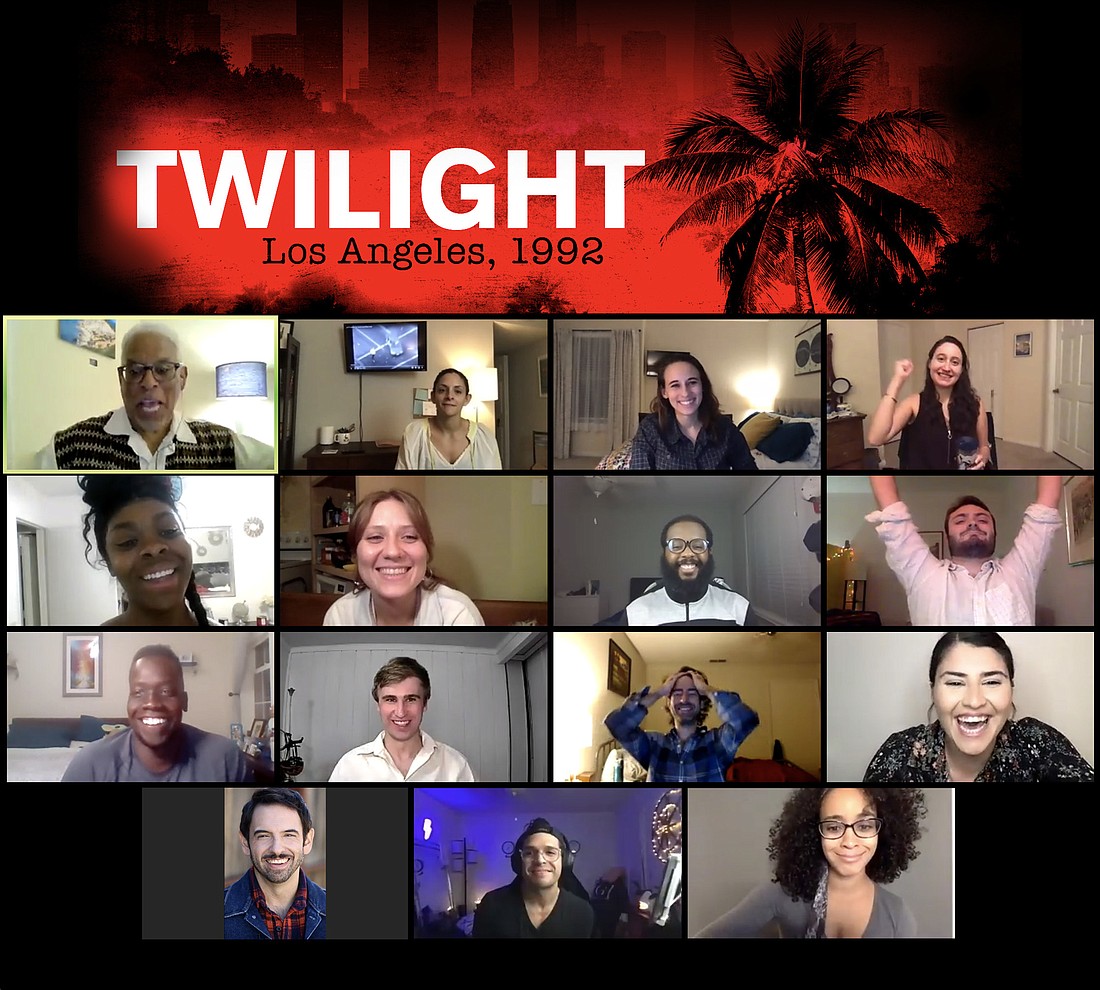- April 18, 2024
-
-
Loading

Loading

Anna Deavere Smith’s “Twilight, Los Angeles, 1992” was written for the stage. It’s a work of theater, but it’s also gritty, street-level journalism.
To create “Twilight,” Smith recorded the stories of people caught up in the maelstrom of the L.A. riots following the acquittal of the four policemen who had savagely beaten Rodney King. Her play was originally a bravura one-woman show in which she portrayed all of the 40 characters she’d selected from hundreds of interviews.
In this innovative Asolo Conservatory production, 12 second-year student actors and two conservatory alumni bring those characters to life in a streaming video. Their individual performances don’t detract from Smith’s original solo accomplishment. But the series of film clips works perfectly with the play’s documentary tone. It doesn’t feel like you’re watching a work of fiction. It feels like real people are talking to you.
Director Benny Ambush honors Smith’s journalistic intent. There’s no hype, no artificial drama. Everything flows from the minds and hearts of the people pouring their hearts out in their own words. The effect sometime feels like a confessional. At other times, it feels like an encounter group.
This dense, confrontational production is bursting with powerful performances. Here are just a few highlights …
Daniel Ajak’s Twilight Bey is riveting. Smith’s play takes its name from the character, of course. In Ambush’s production, the ex-gang member also serves as a mordant narrator. Snippets of his monologue frame the tale and put it all in context. Ptah Garvin morphs into scholar and polemicist Cornel West. He gives you a sense of a rapid-fire mind at work, constantly shifting gears in mid-thought.
Francisco Rodriguez delivers a harrowing portrayal of Rudy Salas Sr., a Mexican-American sculptor and painter. He sports two huge hearing aids—the legacy of a vicious police beating that shattered his eardrums during the “Zoot Suit Riots” of the 1940s. His bitterness towards L.A.’s white power structure is another legacy. Devereau Chumrau’s Theresa Allison has her own tales of police brutality. She founded Mothers Reclaiming Our Children to push back against a wave of Black and Latino men who’d been arrested and imprisoned in L.A. on false or exaggerated charges.
Bryan Lewis is also moving as Reginald Denny, a mild-mannered truck driver who literally didn’t know what hit him when he was brutalized in the riot. Denny doesn’t dwell on his assailants, but his heart goes out to the four Black people who saved his life. Garrick Sigl does a deftly comic characterization of Stanley K. Sheinbaum, the former president of the L.A. Police Commission. He’s a rational mind beating his head against a wall of irrationality. “Come let us reason together” is his approach. The policemen he speaks to prefer to see the African-America community as the enemy.
Dayna Lee Palya portrays movie producer Paula Weinstein as a wry social observer. During the riots, she recalls, “watching rich white people guard their houses and send their children out of L.A. as if the devil was coming after them.” Nydira Adams delivers a fiery performance as Congresswoman Maxine Waters, addressing the congregation of the First African Methodist Episcopal Church. Waters rejects attempts to dismiss the riot as a crime committed by opportunistic thugs. “Whether we like it or not, riot is the voice of the unheard.”
These powerful performances come together with Seaghan McKay’s outstanding video production design and editing, Aja Jackson’s naturalistic lighting design, and David Wilson and Ryan Blaney’s haunting sound design. Dee Sullivan and David M. Covach’s smart, period costumes help the young actors get into character, even when their characters happen to be old. Kudos also to voice coach Patricia Delorey and movement coach Eliza Ladd for shaping the actors’ physical characterizations. The Asolo Conservatory’s creative team worked under battlefield conditions to make this virtual show a reality. They won that battle — and it's quite a victory.
Smith wrote a great play, but it’s a tough play. A lazy writer would wrap up the L.A. riots in a neat, tidy bow. She doesn’t.
Smith’s authorial intelligence doesn’t go easy on the audience — critics, especially. In a great work of fiction (even if based on reality) there’s usually a big idea at the heart. The characters have different viewpoints, but they all flow from the author’s mind. Their dialogue is a delivery system for the big ideas David Mamet, Tom Stoppard or Phoebe Waller-Bridge are trying to convey. For a critic, finding that big idea is like finding Waldo. That’s your job, basically.
But Smith’s characters aren’t fictional, they’re real. Their words are their own, not a product of the playwright’s imagination. She selected which characters and words she’d include, of course. But the stubborn individuality of the minds behind those words persists. So what’s the point of her play?
There isn’t any. More accurately, there are 40 viewpoints. Passionate, enraged, terrified, self-justifying, guilt-ridden, often contradictory. Who’s right?
You have to make up your own mind.
That’s the point.